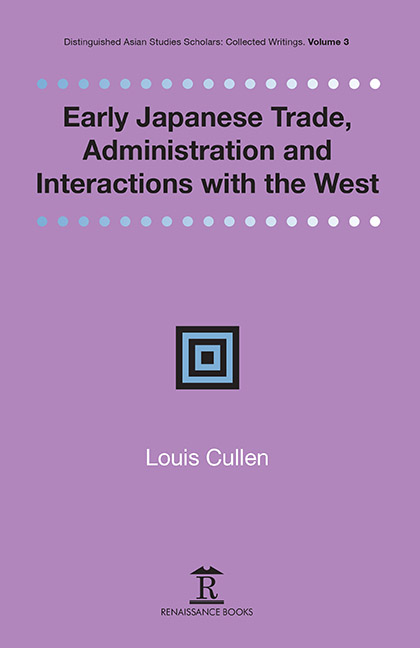2 - Knowledge and Use of Japanese by the Dutch on Dejima Island, Nagasaki
Published online by Cambridge University Press: 30 April 2022
Summary
INTRODUCTION
THE VIEW THAT the Dutch were prohibited from learning Japanese has long been repeated. However, there is no contemporary evidence of a prohibition. While a few contemporary Dutch references appear at first sight specific, their context may imply some doubt or qualification. The most comprehensive modern statement is that by the respected American historian Jansen:
It was Japanese policy to discourage the Dutch from studying Japanese lest the outsiders get too close to those they would contact. On a number of occasions representatives of the VOC (Verenige Oost-Indische Compagnie or United East-Indies Company) were told to leave Japan because their knowledge of Japanese was becoming too good. The Japanese wanted to keep the contact on their own terms.
Jansen's ‘a number of occasions’ needs to be qualified. They were not numerous. Apart from cases in 1669 and 1670 and in the years 1739 and 1741 (three individuals in two instances), the sole other case was that of the medical doctor in 1718. The better-documented case of Domburg in 1784 was entirely in a different category. The argument – assertion of existence accompanied by elusiveness of any concrete evidence – is typical in the sense that it accorded with other undocumented prohibitions: for example, the argument that maps were not to be shown to foreigners. In fact, they were, on many occasions. In the wake of the Laxman visit to Ezo, a geographer in a group of shogunal doctors, and geographers visiting the Dutch at their inn, showed maps of Japan he had been given by some of the officers on Laxman's vessel. The (Von)Siebold affair revolved in part about sensitive maps of the Ezo region, and their export: the explorer Mogami had intimated to Siebold the sensitivity of the topic, so much so that Siebold recorded Mogami's conversation in Latin in his diary. Arguments supporting the existence of various restrictions have seemed all the more plausible because the Dutch in Dejima complained often about restraints, variously serious and petty they suffered. Kaempfer, who in 1712 almost two decades after his Japanese sojourn as doctor in the Dutch factory had mellowed enough to include in his immense Latin text Amoenitatum exoticarum, a relatio which concluded with a remarkable section Regni Japonica status post occlusionen prosperissus) (the highly prosperous condition of the Japanese kingdom after its closure).
- Type
- Chapter
- Information
- Publisher: Amsterdam University PressPrint publication year: 2020



